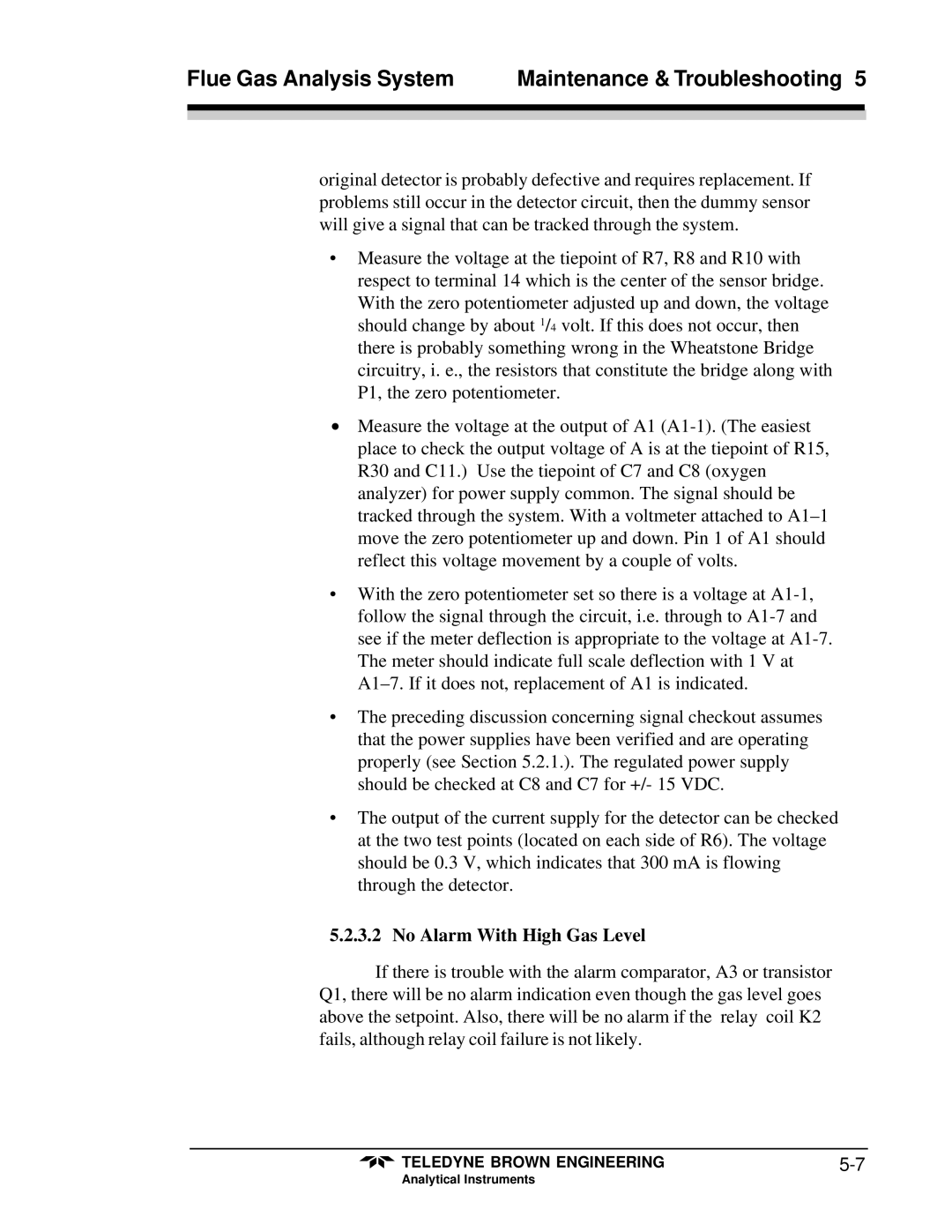
|
| Flue Gas Analysis System | Maintenance & Troubleshooting 5 | |
|
|
|
|
|
|
|
|
|
|
|
|
|
|
|
|
|
|
|
|
original detector is probably defective and requires replacement. If problems still occur in the detector circuit, then the dummy sensor will give a signal that can be tracked through the system.
•Measure the voltage at the tiepoint of R7, R8 and R10 with respect to terminal 14 which is the center of the sensor bridge. With the zero potentiometer adjusted up and down, the voltage should change by about 1/4 volt. If this does not occur, then there is probably something wrong in the Wheatstone Bridge circuitry, i. e., the resistors that constitute the bridge along with P1, the zero potentiometer.
•Measure the voltage at the output of A1
•With the zero potentiometer set so there is a voltage at
•The preceding discussion concerning signal checkout assumes that the power supplies have been verified and are operating properly (see Section 5.2.1.). The regulated power supply should be checked at C8 and C7 for +/- 15 VDC.
•The output of the current supply for the detector can be checked at the two test points (located on each side of R6). The voltage should be 0.3 V, which indicates that 300 mA is flowing through the detector.
5.2.3.2 No Alarm With High Gas Level
If there is trouble with the alarm comparator, A3 or transistor Q1, there will be no alarm indication even though the gas level goes above the setpoint. Also, there will be no alarm if the relay coil K2 fails, although relay coil failure is not likely.
TELEDYNE BROWN ENGINEERING |
Analytical Instruments
